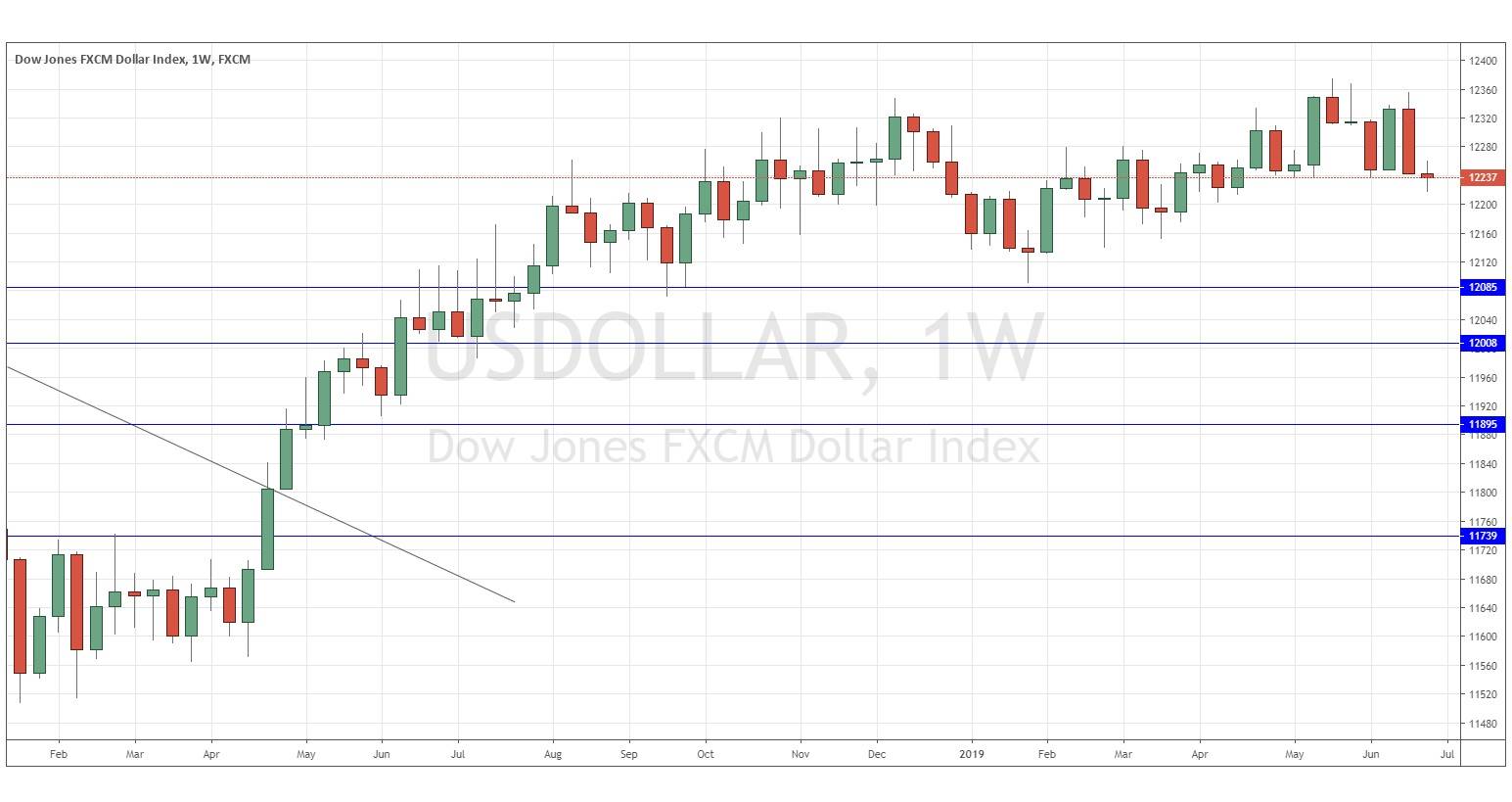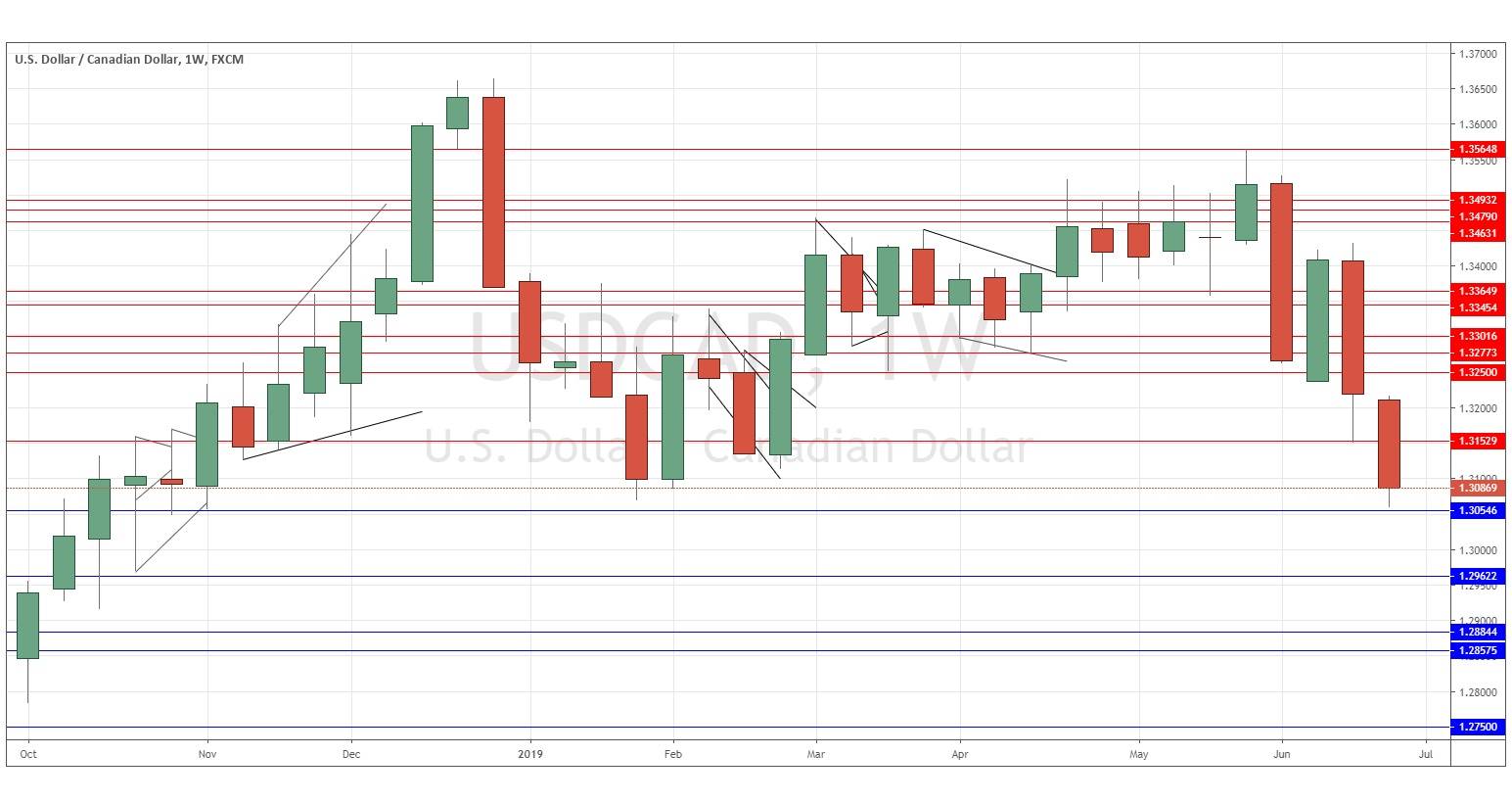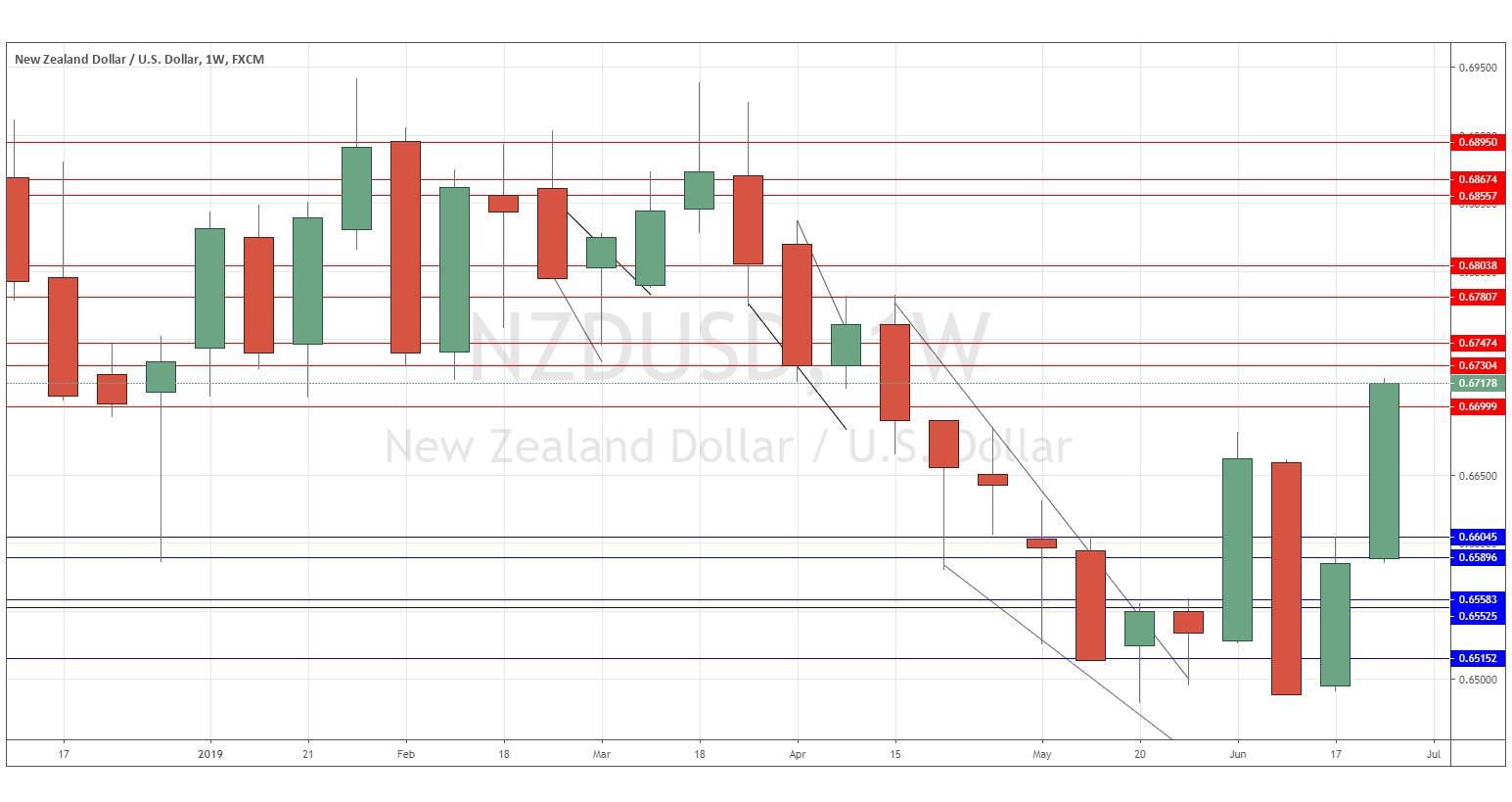The difference between success and failure in Forex trading is very likely to depend upon which currency pairs you choose to trade each week, and not on the exact trading methods you might use to determine trade entries and exits. Each week I am going to analyze fundamentals, sentiment and technical positions in order to determine which currency pairs are most likely to produce the easiest and most profitable trading opportunities over the next week. In some cases it will be trading the trend. In other cases it will be trading support and resistance levels during more ranging markets.
Big Picture 30th June 2019
In my previous piece last week, I forecasted that the best trades would be short USD/CHF, short USD/JPY, and long Gold/USD. The USD/CHF currency pair fell by 0.04%, the USD/JPY currency pair rose by 0.56%, and Gold rose by 0.71%. This gave an averaged win for the week of 0.06%.
Last week’s Forex market again saw the strongest rise in the relative value of the New Zealand Dollar, and the strongest fall in the relative value of the Japanese Yen.
Last week’s market was still dominated by the previous week’s more dovish message from the FOMC on the pace of rate cuts. This has weakened the U.S. Dollar and boosted the stock market and Crude Oil; it has also boosted the commodity currencies quite strongly as money now begins to flow out of safe havens.
The Forex market was quite active last week, with the best performing currencies relatively being the commodity currencies, especially the New Zealand and Australian Dollars.
This week has a slower news agenda than last week, except for U.S. Non-Farm Payrolls data due at the end of the week.
Fundamental Analysis & Market Sentiment
Fundamental analysis has turned more bearish on the U.S. Dollar following the Federal Reserve’s more dovish approach to monetary policy and growth and weaker than expected inflation data. However, the economy is still growing quite strongly, and the U.S. stock market is trading very close to last-week’s all-time high price.
Market sentiment is more risk-on now as safe-haven assets begin to decline while commodities do well. The long-term bullish trend in the U.S. Dollar seems to be preparing to reverse.
Technical Analysis
U.S. Dollar Index
The weekly price chart below shows that last week the USD Index fell a little, printing a very small doji candlestick. The price is down a little over 3 months but very slightly up over 6 months, indicating the early stage of a new bearish trend may be underway, following a long period of consolidation by the Dollar. However, next week’s direction looks very uncertain.
USD/CAD
The weekly chart below shows last week saw this pair print a strong bearish candlestick, closing right on its low after falling quite solidly over the past month – these are bearish signs. Although the weekly close was the lowest for eight months, the bearish trend is relatively shallow and so might be prone to deep retracements. If risk-on sentiment continues and the U.S. Dollar gets weaker, then this currency pair should fall further over the coming week.
NZD/USD
The weekly chart below shows that although we have seen a bearish trend in force, the price has risen very strongly and consistently over recent days to produce a large and very strong bullish candlestick. It would not be a surprise if this currency pair advanced further over the course of this week.
Conclusion
This week I forecast the best trade will be short USD/CAD.




